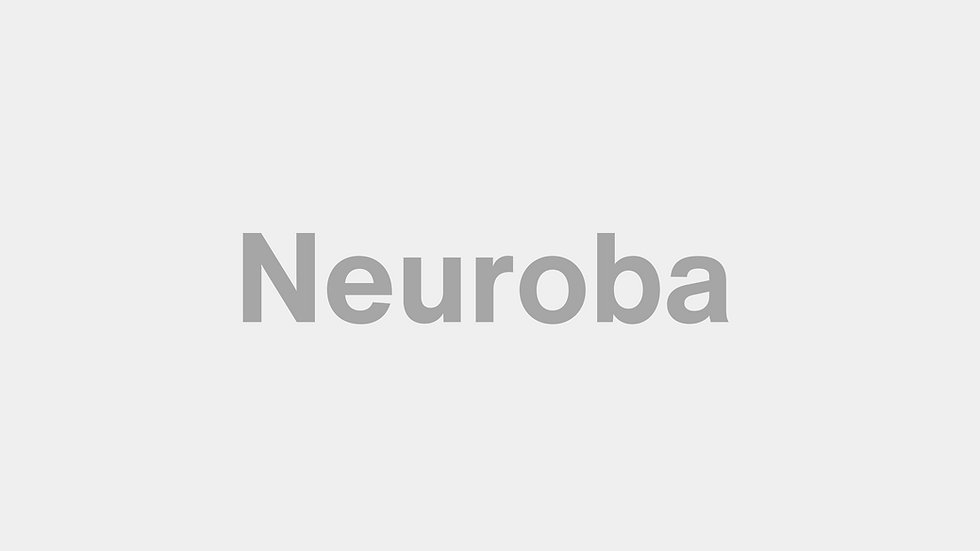The Neuroscience of Intuition: How Do We Know Without Knowing? | Neuroba
- Neuroba
- 12 minutes ago
- 4 min read
In the ever-evolving quest to understand human cognition, intuition remains one of the most intriguing and elusive phenomena. Often described as the ability to “know without knowing how,” intuition challenges our understanding of logic, reasoning, and evidence-based decision-making. At Neuroba, our mission to connect human consciousness through neurotechnology includes unraveling the biological and cognitive basis of intuitive processes. This article explores the neuroscience behind intuition—what it is, how it works in the brain, and how neurotechnology is providing new tools to study and potentially enhance intuitive intelligence.
Defining Intuition: Beyond Gut Feelings
Intuition is frequently misunderstood as mere guesswork or irrational instinct. However, from a neuroscientific standpoint, intuition is a sophisticated, unconscious cognitive process in which the brain synthesizes vast amounts of information—often from prior experience—to produce a rapid judgment or insight. It is not the absence of logic, but rather the culmination of unconscious reasoning, pattern recognition, and emotional tagging that occurs beneath the threshold of conscious awareness.
Neuroba’s investigations into intuition position it not as an anomaly of cognition but as a legitimate, evolutionarily conserved feature of the human brain—an emergent property of neural architecture tuned for efficiency and survival.
Neural Correlates of Intuition: What the Brain Reveals
Several key brain regions are implicated in intuitive processing:
Ventromedial Prefrontal Cortex (vmPFC): This area integrates emotional signals and past experiences, playing a pivotal role in making quick, value-based decisions.
Insular Cortex: Involved in interoception—the sense of the internal state of the body—the insula contributes to the “gut feeling” aspect of intuition.
Basal Ganglia: Known for their role in procedural learning and habit formation, these structures are crucial in forming non-conscious expectations and judgments.
Right Hemisphere Structures: The right hemisphere, particularly the right anterior temporal lobe, has been associated with insight generation and global pattern detection.
Functional MRI and EEG studies conducted by teams including those at Neuroba have shown that intuitive decisions can activate these regions milliseconds before individuals become consciously aware of having made a choice. This finding suggests that the brain reaches a conclusion before we can articulate or rationalize it—a phenomenon that supports the concept of “knowing without knowing.”
Pattern Recognition and Experience Encoding
At its core, intuition is built upon the brain’s remarkable capacity for pattern recognition. Every sensory input, emotional response, and decision we encounter is encoded, stored, and categorized—often subconsciously. Over time, this creates a deep neural repository of experiences. When presented with a novel but analogous situation, the brain rapidly retrieves and applies these embedded patterns, offering a quick response without engaging in conscious analysis.
This is particularly evident in expert decision-makers—such as physicians, traders, or pilots—who often rely on intuition in high-stakes scenarios. Studies show that their “hunches” are often accurate because their brains have learned to abstract key features from years of accumulated data.
At Neuroba, we are developing brain-computer interface (BCI) protocols to study these neural substrates in real-time. By monitoring brainwave activity during intuitive decisions, we aim to isolate biomarkers of intuition that can be used to train or augment intuitive reasoning through neurofeedback.
Intuition and Emotion: An Interdependent Relationship
Contrary to the rationalist tradition that divorces emotion from reason, neuroscience reveals that intuitive thinking is deeply intertwined with affective processes. The amygdala and limbic system help tag experiences with emotional valence, which the brain later uses as heuristic cues in decision-making. Intuition, therefore, is not emotionally neutral—it is shaped by past emotional experiences that subtly guide future choices.
This interdependence also implies that trauma, chronic stress, or affective disorders can impair intuitive function. Neuroba is exploring therapeutic neurotechnologies that could modulate emotional memory encoding and retrieval, potentially restoring or recalibrating intuitive faculties in individuals with PTSD, anxiety, or decision fatigue.
The Role of Neurotechnology in Enhancing Intuition
With the advent of advanced neuroimaging, neural decoding, and closed-loop BCIs, Neuroba is pioneering tools to not only measure intuition but also to enhance it. For instance:
Neurofeedback Training: By reinforcing optimal brainwave patterns associated with intuitive insight (e.g., alpha-theta synchrony), users can potentially strengthen their intuitive abilities.
Predictive Neural Modeling: Using machine learning models trained on brain data, we can begin to predict when a person is likely to make an intuitive decision, and under what conditions such decisions are most reliable.
Intuition Mapping Interfaces: New Neuroba platforms are being developed to visualize intuitive responses in real-time, providing individuals and organizations with cognitive insight maps for strategic applications in business, healthcare, and leadership.
These applications are particularly relevant in domains where rapid, high-consequence decisions are required—military operations, emergency medicine, or global diplomacy. Understanding and enhancing intuition may soon be recognized as a crucial cognitive edge.
Intuition in the Context of Collective Intelligence
Perhaps most compelling is how intuition may scale in the context of connected minds. Neuroba envisions a future where neurotechnology enables collective intuition—a networked form of rapid, emotionally intelligent cognition distributed across many individuals. Through synchronized BCIs and emotional signal sharing, collective groups may be able to “sense” emergent patterns and make decisions that no individual brain could achieve alone.
This model has profound implications for decentralized governance, disaster response, and even the evolution of societal ethics. It may represent a new paradigm in human cognition—one that transcends the boundaries of individual insight.
Conclusion: Reframing Intuition as a Neuroscientific Frontier
Intuition, once relegated to the realm of mysticism and anecdote, is now emerging as a frontier of neuroscience. It is a complex, multilayered process involving neural pattern recognition, emotional encoding, and subconscious computation. At Neuroba, we are not only committed to understanding the neural architecture of intuition but also to enhancing it through responsible neurotechnological innovation.
By exploring the biological foundations of “knowing without knowing,” we open the door to more effective decision-making, deeper self-awareness, and the possibility of intuitive intelligence networks that shape the future of human collaboration.
